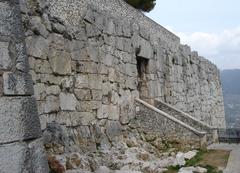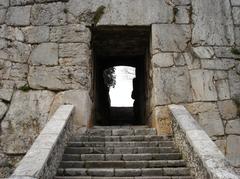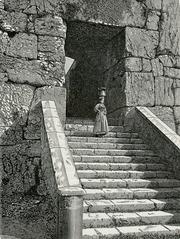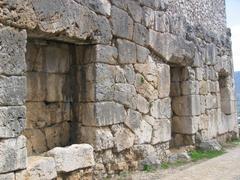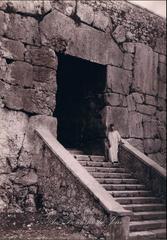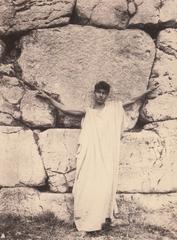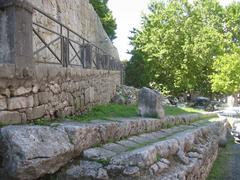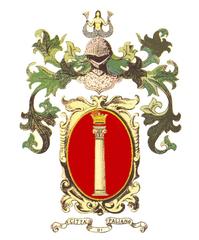
Visiting the Acropolis of Alatri in Frosinone, Italy: A Comprehensive Guide
Date of Visit: 24/07/2024
Introduction to the Acropolis of Alatri
Located in the picturesque town of Alatri in the province of Frosinone, Lazio, Italy, the Acropolis of Alatri is a mesmerizing historical site of immense cultural and archaeological significance. Renowned for its ancient megalithic walls and the fascinating architectural prowess of the Hernici people, this ancient monument is a treasure trove for history buffs, architecture enthusiasts, and travelers alike. The Acropolis, also known as Aletrium in ancient times, dates back to the 7th century BC and showcases advanced engineering and construction techniques that continue to intrigue modern scholars and engineers (Delicious Italy).
The Acropolis of Alatri stands as a testament to the rich cultural heritage and historical significance of the region. The megalithic walls, also referred to as cyclopean walls, are constructed from enormous stone blocks fitted together without the use of mortar, a technique that has baffled experts for centuries. Encircling an area of about 25 hectares, these walls highlight the sophisticated understanding of geometry and astronomy possessed by the ancient builders (The Ancient Connection).
In addition to its architectural marvels, the Acropolis has served as a focal point for cultural and religious activities since its inception. From its alliance with Rome during the Roman era to its role as a bishop’s see during the age of Emperor Constantine, the site has played a pivotal role in the historical and cultural landscape of the region (Italy This Way). This comprehensive guide aims to provide visitors with all the essential information needed for a memorable visit, including historical insights, visiting hours, ticket prices, travel tips, and nearby attractions.
Table of Contents
- Introduction
- Historical Background
- Architectural Marvel
- Cultural and Religious Significance
- Defensive Role
- Archaeological and Astronomical Alignments
- Preservation and Modern Significance
- Visitor Experience
- Events and Cultural Activities
- Practical Information for Visitors
- Nearby Attractions
- FAQ Section
- Conclusion
Historical Background
The Acropolis of Alatri, located in the province of Frosinone, Lazio, Italy, is a site of immense historical significance. The town of Alatri, known in ancient times as Aletrium, was one of the oldest centers of Lazio and a principal city of the Italic people known as the Hernici. The Hernici were responsible for constructing the Acropolis and the surrounding megalithic walls around the 7th century BC (Delicious Italy). These walls, also known as cyclopean walls, are composed of massive stone blocks fitted together without mortar, a construction technique that continues to baffle modern engineers and archaeologists.
Architectural Marvel
The Acropolis is encircled by a second, wider megalithic polygonal wall, which is over two kilometers long and almost entirely preserved, covering an area of about 25 hectares (The Ancient Connection). The walls are characterized by their perfect grafting in an impervious and chaotic natural environment, showcasing an advanced level of engineering and architectural skills that predate Roman and Etruscan civilizations. The Porta Maggiore, or Porta Civita, is particularly notable for its colossal monolithic lintel, which measures over five meters in length (Italia.it).
Cultural and Religious Significance
The Acropolis of Alatri has been a focal point of cultural and religious activities since its inception. During the Roman era, Alatri became an ally of Rome and was later elevated to the status of a “Municipium” in 90 BC (Italy This Way). The site also served as a bishop’s see during the age of Emperor Constantine and was a center for one of the oldest monastic communities in the West, even before the formation of Benedictine monasticism.
Defensive Role
The Acropolis and its surrounding walls played a crucial defensive role throughout history. During the barbarian invasions, Alatri strengthened its defensive structures to withstand threats from the Lombards and Saracens (Italy This Way). The walls’ construction, with their massive stone blocks and strategic placement, provided a formidable barrier against invaders.
Archaeological and Astronomical Alignments
The Acropolis of Alatri is not only an architectural marvel but also an archaeological enigma. The fortification presents archaeoastronomical alignments, with the perimeter of the walls matching the Gemini constellation during the summer solstice (The Ancient Connection). The North-Western wall is aligned with the heliacal values of the sun at dawn on June 21, while the South-Western wall aligns with the heliacal sunset at the equinoxes. These alignments suggest a sophisticated understanding of astronomy and geometry by the ancient builders.
Preservation and Modern Significance
Despite the passage of millennia, the Acropolis of Alatri remains remarkably well-preserved. The walls have survived various historical events, including medieval modifications and modern interventions. The site continues to be a subject of study and admiration for historians, archaeologists, and tourists alike. The preservation of the Acropolis and its walls offers a glimpse into the advanced engineering and cultural practices of ancient Italic civilizations.
Visitor Experience
Visitors to the Acropolis of Alatri can explore the historic center of the town, which is gathered within the irregular perimeter of the walls. The labyrinth of narrow, winding streets, often steeply sloping, unravels between ancient buildings and modern tenements, wrapping around the Acropolis fortress (e-borghi). The site offers a unique opportunity to immerse oneself in the rich history and cultural heritage of Alatri.
The main access to the Acropolis is through the Porta Maggiore, which leads to a green tree-lined square where the cathedral stands. The cathedral, erected before the year 1000 with later 16th-century alterations and an 18th-century façade, adds to the historical ambiance of the site (Italia.it). From the Civita Gardens, visitors can enjoy a beautiful panorama over the historic center below, the plains of Ciociaria, and the Ernici mountains.
Main Gate and Lesser Gate
The Acropolis features two main entrances: the Main Gate and the Lesser Gate. The Main Gate, located on the southern side, is notable for its imposing monolithic lintel. The Lesser Gate, while less grandiose, is equally fascinating with its narrow, perfectly preserved ascending corridor. Both gates are excellent examples of ancient engineering and are must-see spots within the Acropolis.
Ancient Niches and Portico
Near the gates, visitors will find three ancient niches and the remains of a portico built by the censor Lucius Betilienus Varus in the 2nd century B.C. These structures add to the historical charm of the Acropolis and provide a glimpse into the architectural advancements of the time (Italia.it).
Cathedral of St. Paul
At the top of the Acropolis, the Cathedral of St. Paul stands on the remains of a 10th-century temple. Inside, visitors can admire original parts of the building and the statue of St. Sixtus. The cathedral is an important religious site and offers a serene atmosphere for reflection and admiration of ancient art and architecture.
Events and Cultural Activities
Alatri hosts various cultural events that celebrate its rich heritage. Notable events include the Alatri Jazz Festival, the International Children’s Folk Festival Luigi di Vico, and the Festival Internazionale del Folklore Flavio Fiorletta (e-borghi). These events provide an opportunity for visitors to experience the vibrant cultural life of the town while exploring its historical sites.
Practical Information for Visitors
Visiting Hours
The Acropolis of Alatri is open to visitors daily from 9:00 AM to 7:00 PM. It’s recommended to check the official website for any changes in visiting hours.
Tickets
Entrance to the Acropolis is free of charge, although donations for site preservation are welcomed.
Accessibility
The site is accessible by car, train, and air, making it convenient for tourists to visit. The town offers various accommodation options, dining establishments, and shops to cater to visitors’ needs (e-borghi). The historic center, with its medieval layout and ancient structures, provides a picturesque setting for a memorable visit.
Travel Tips
- Wear comfortable walking shoes to explore the uneven terrain.
- Bring a camera to capture the stunning views and historical landmarks.
- Consider visiting during the early morning or late afternoon to avoid crowds and enjoy a more serene experience.
Nearby Attractions
While in Alatri, visitors can also explore nearby attractions such as the Certosa di Trisulti, a beautiful monastery located just a short drive away, and the charming town of Anagni, known for its medieval architecture and historical significance.
FAQ Section
What are the visiting hours for the Acropolis of Alatri? The Acropolis of Alatri is open daily from 9:00 AM to 7:00 PM. Check the official website for any updates.
How much are the tickets to visit the Acropolis of Alatri? Entrance to the Acropolis is free of charge, but donations for site preservation are welcomed.
Is the Acropolis of Alatri accessible by public transportation? Yes, Alatri is accessible by car, train, and air, making it convenient for tourists to visit.
What are some nearby attractions to visit? Nearby attractions include the Certosa di Trisulti and the town of Anagni.
Conclusion
The Acropolis of Alatri is a site of profound historical, architectural, and cultural significance. Its well-preserved megalithic walls, archaeoastronomical alignments, and rich cultural heritage make it a must-visit destination for history enthusiasts and tourists alike. Plan your visit today to explore this remarkable landmark and immerse yourself in the history of ancient Italic civilizations.
